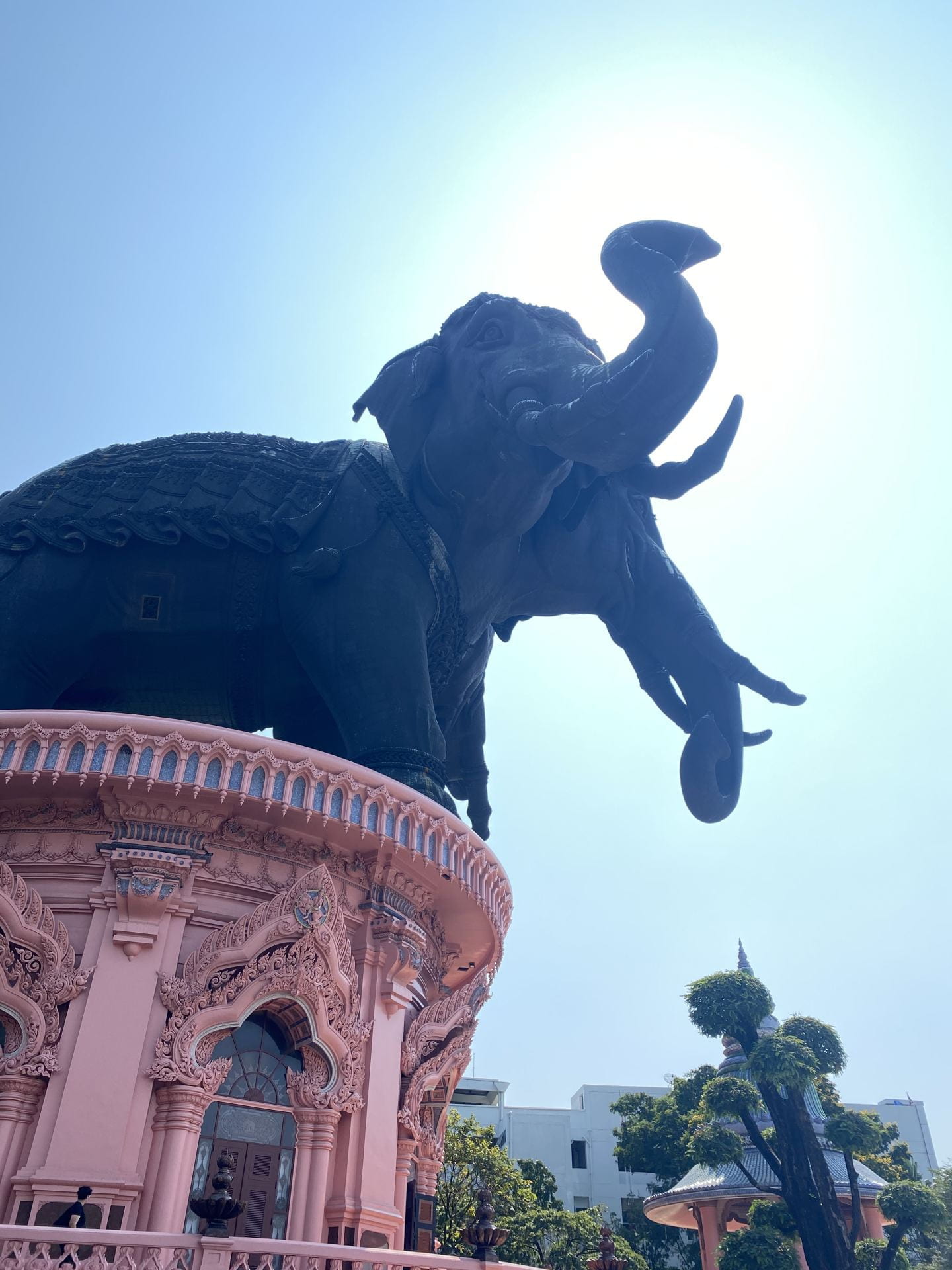Coming to Bangkok on the Prime Minister’s Scholarship, one of the events I was most looking forward to was visiting the local university and interacting with the student community. As representatives of the University of Auckland, we were invited by the Rajamangala University of Technology Phra Nakhon (RMUTP) to visit the campus and create valuable partnerships, opening up international student exchange between the two universities.
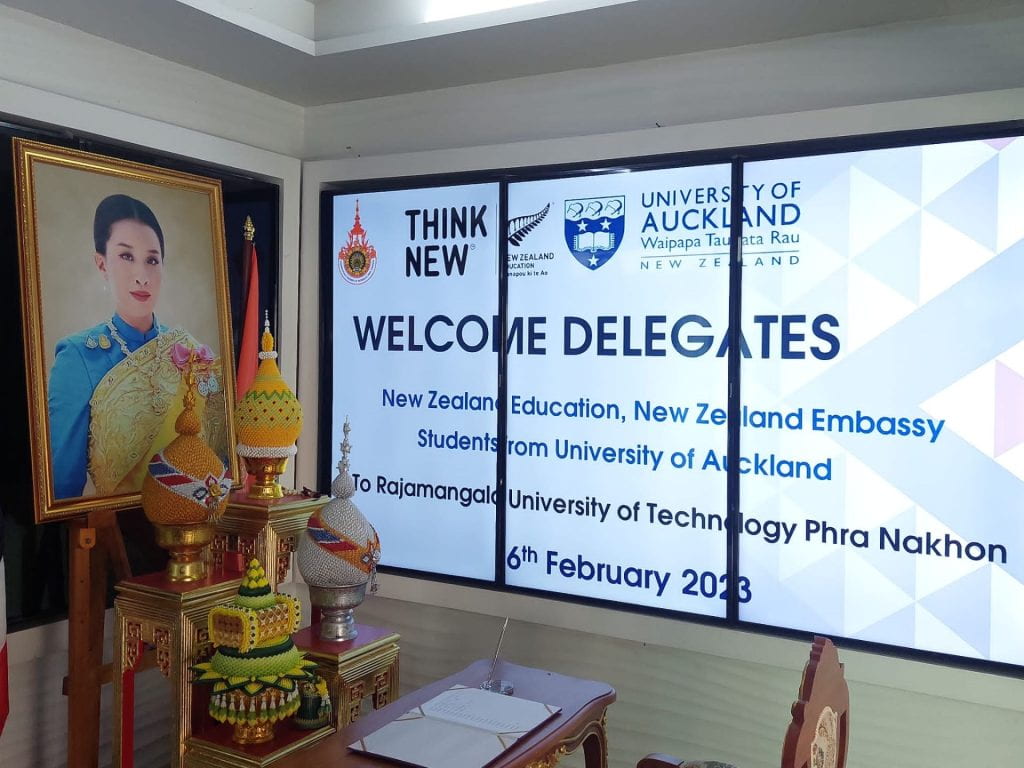
We were warmly welcomed by the president of the university, the deans of each department within the university, and a large camera crew. The moment we stepped into the campus, we felt the responsibility to represent our university to the best of our abilities. The professionalism shown to us by the people of RMUTP was both intimidating and inspiring. The opening ceremony included a speech from the president and an introduction presentation to RMUTP, giving us a better idea of the university’s values and principles.
We, as the representatives of the University of Auckland, had an opportunity to introduce ourselves, our NZ culture, the PMSA programme, and finally, introduce our university. The signing of the partnership between the two universities felt like we were a part of something extremely significant for the future of our university. With this event and overall experience, we were able to look at all of the similarities between the Thai and the Maori culture, allowing us to learn just how much we have in common as two communities from different countries.
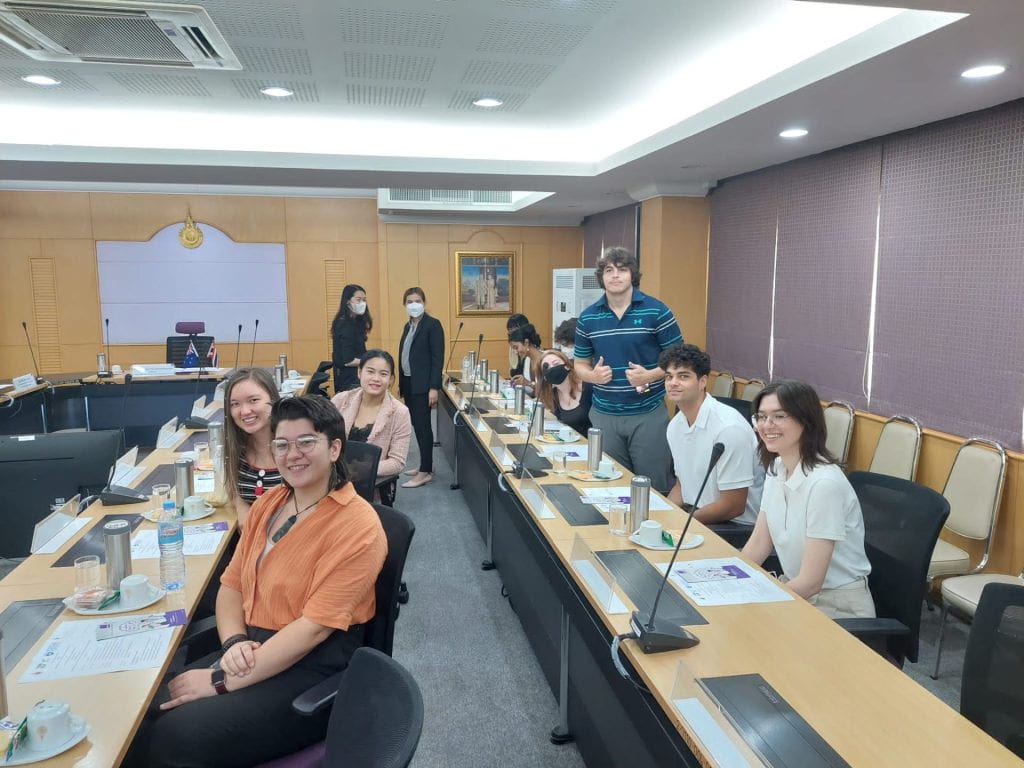
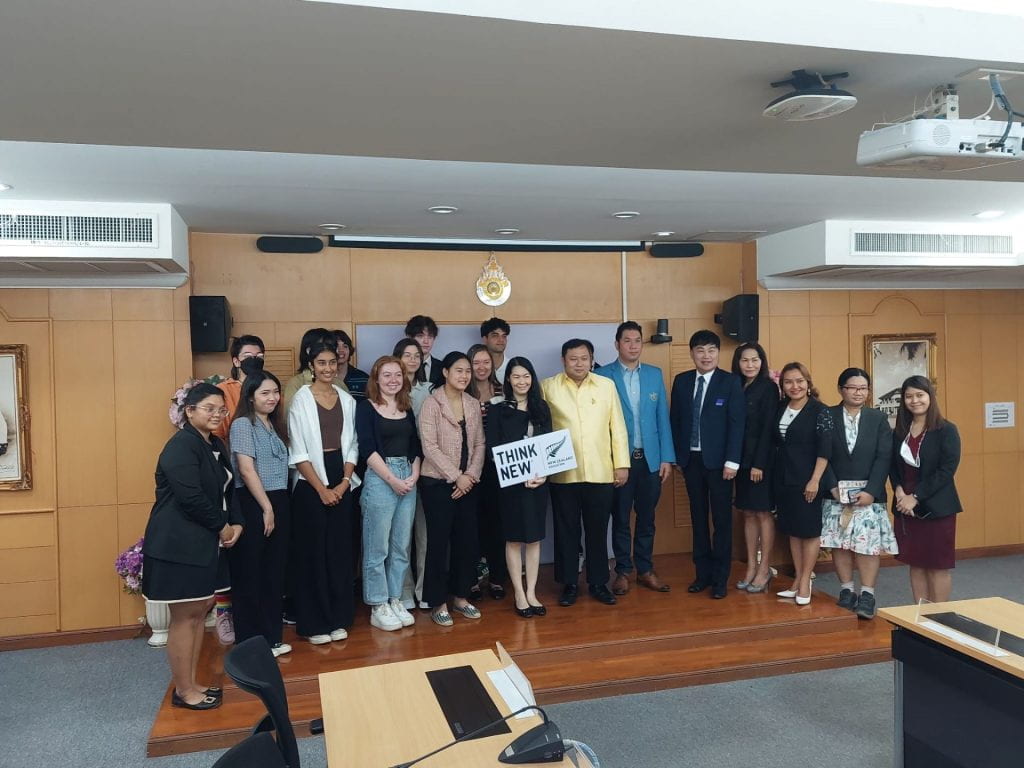
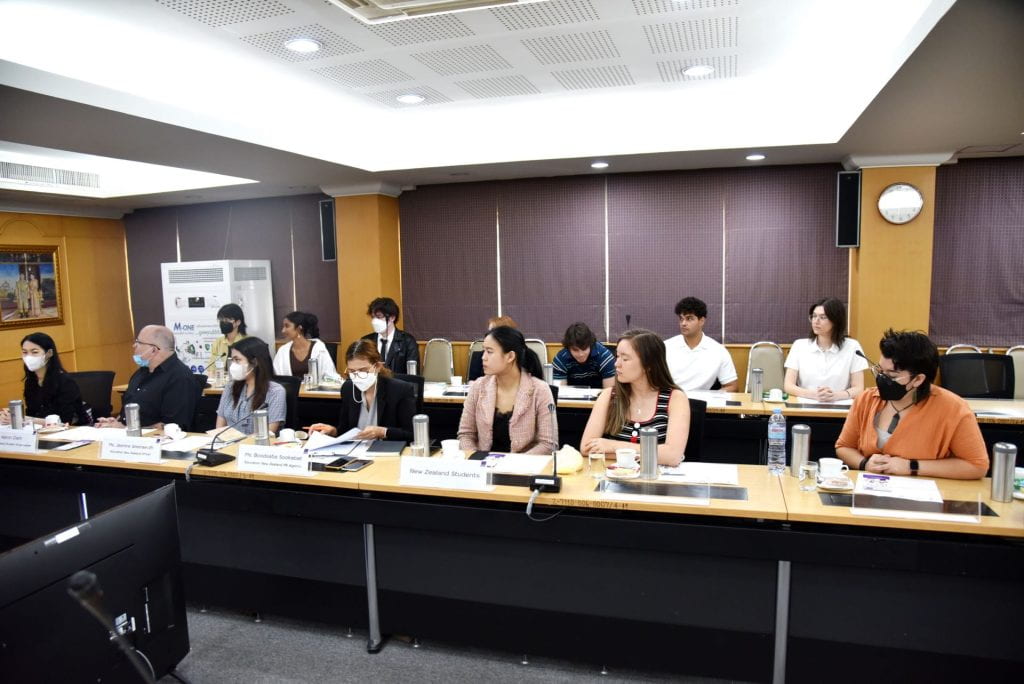
After the introductions and a tour of the university, we were welcomed by the home economics team, who taught us how to make one of many traditional dishes of Thailand, Pad Thai. Through this experience, we interacted with some of the local students and learned about the history and culture of the food in Thailand.
For those that might not be familiar, Pad Thai is a stir-fried rice noodle dish that is commonly served as street food in Thailand. It is typically made with rice noodles, shrimp, peanuts, a scrambled egg, and bean sprouts, among other vegetables. All of the flavour, however, is in the Pad Thai sauce consisting of fish sauce, oyster sauce, brown sugar, and tamarind. The dish is relatively easy to make, which makes it a perfect dish for a street food stall. It is common in restaurants and fancier areas to serve the dish wrapped up in a thin omelette, enhancing the presentation and decoration of the plate.

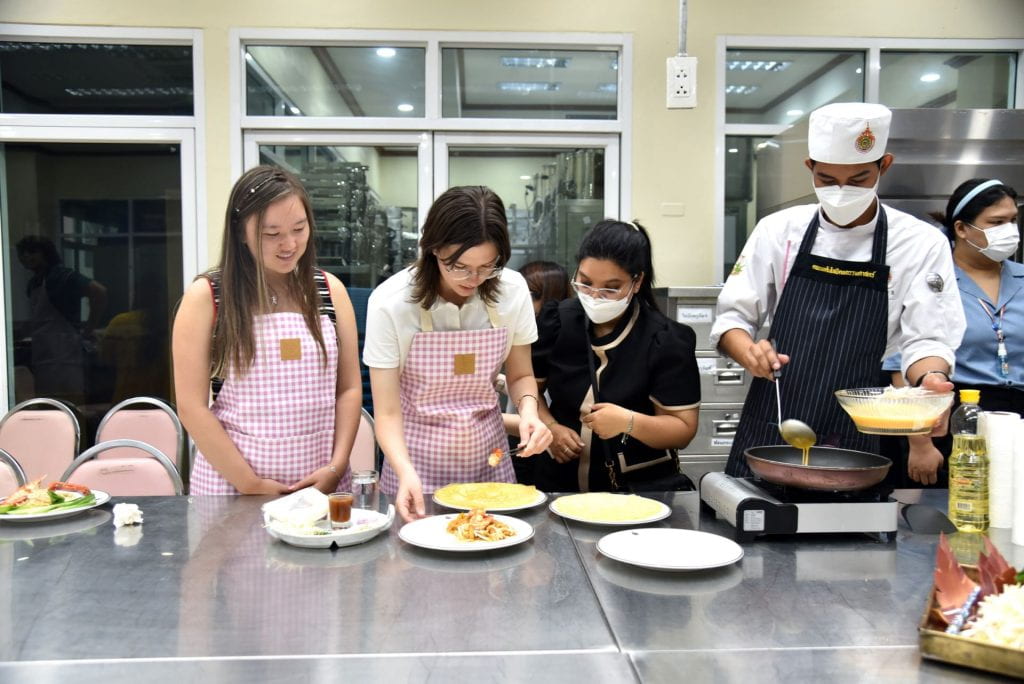
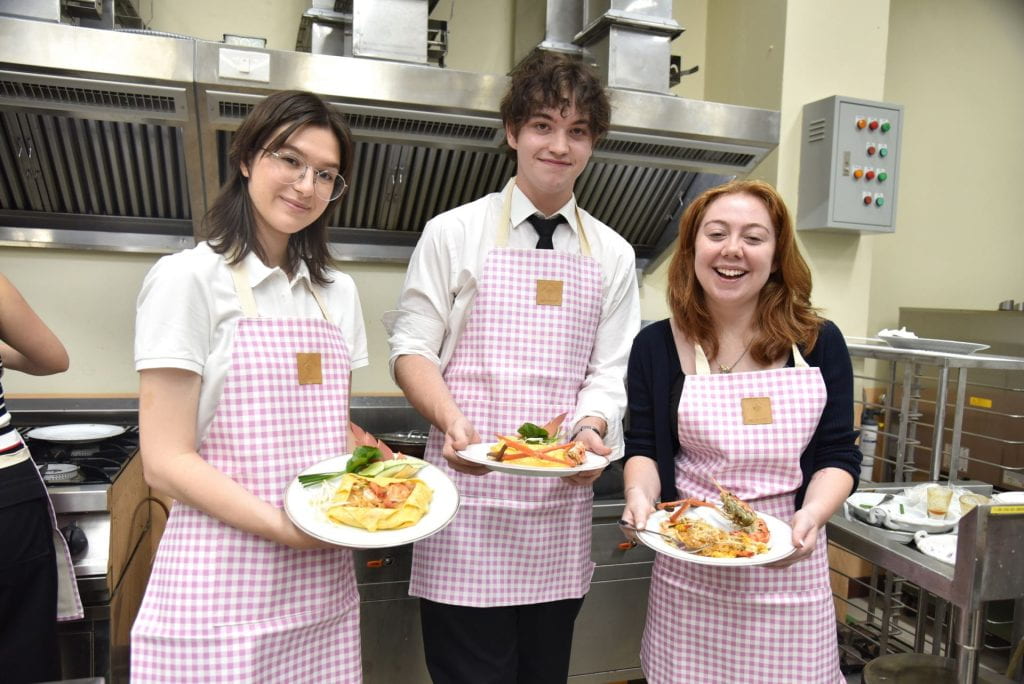
RMUTP university used to be a part of a temple compound and is thus located in an area surrounded by many smaller temples and museums. As a part of our visit, we met three amazing English major students who took us to two different temples on the university grounds and explained the cultural meanings behind each one. We had the opportunity to pay respects to the temples while learning of their background and importance to the university while also socialising with local people our age.
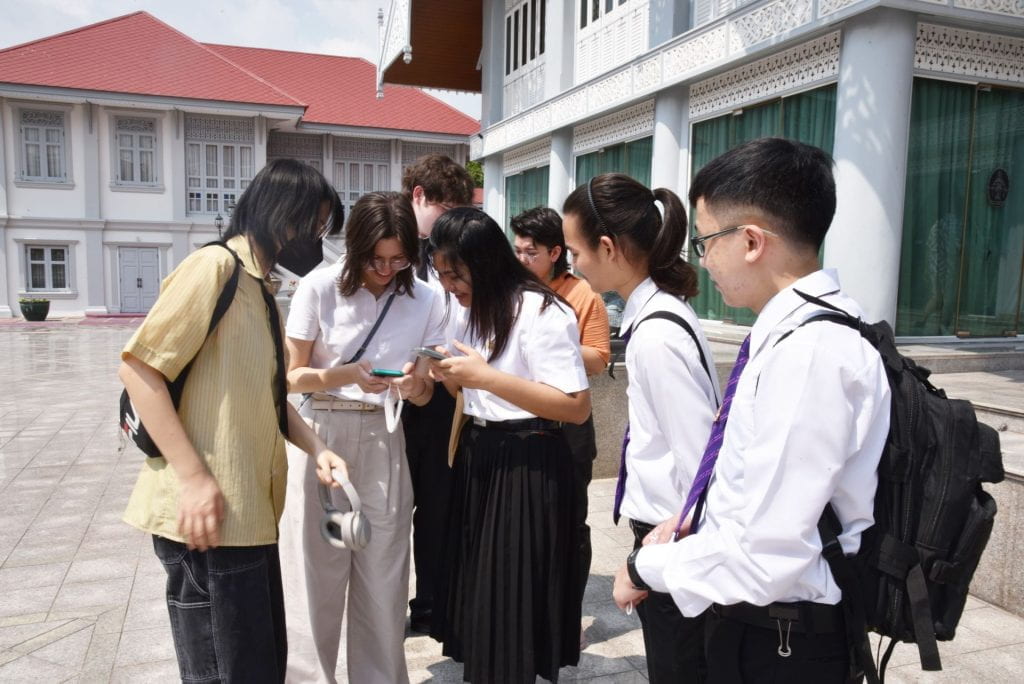
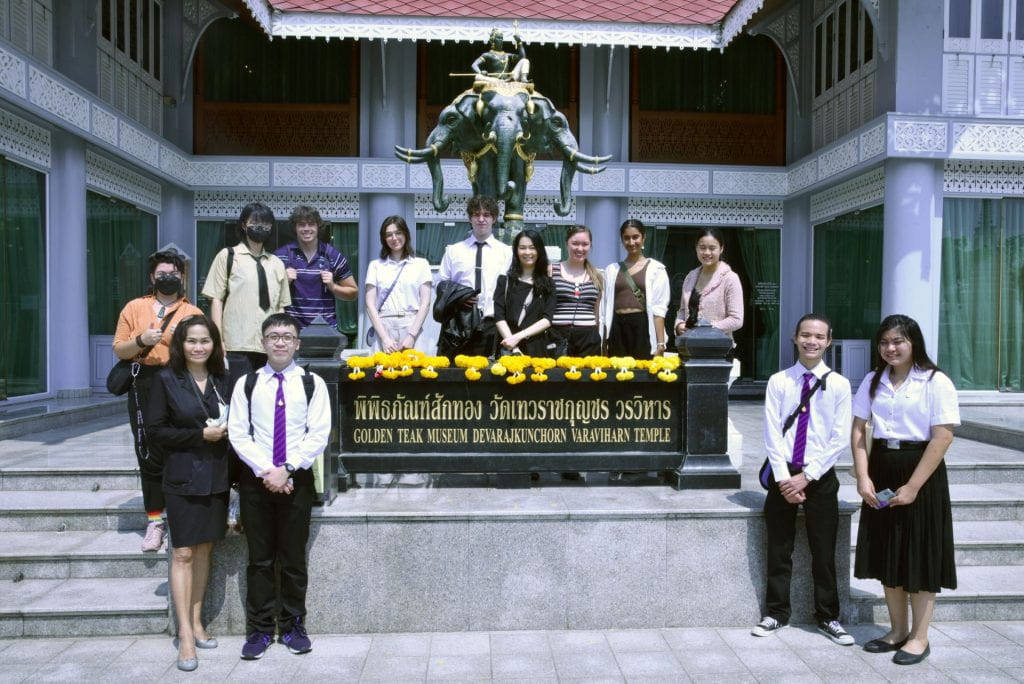
After exchanging contacts and saying goodbye to the students of RMUTP University, we took the afternoon to visit the Erawan museum with our advisor / Thai dad, Aaron. The Erawan Museum is a culturally significant structure that was built recently as a way to unite many different cultures within Thailand. The construction of the museum started in 1994 and ended in 2003 with the main aim of promoting cultural tourism around Thailand.
The inside of the museum is a beautiful decorative art made up of recycled ceramics, such as spoons, bowls, and tea sets, adding a sustainability feature to the museum’s design. Aaron took on the tour guide role as soon as we entered the museum grounds and taught us about the significant sights we saw as we walked through the museum grounds.
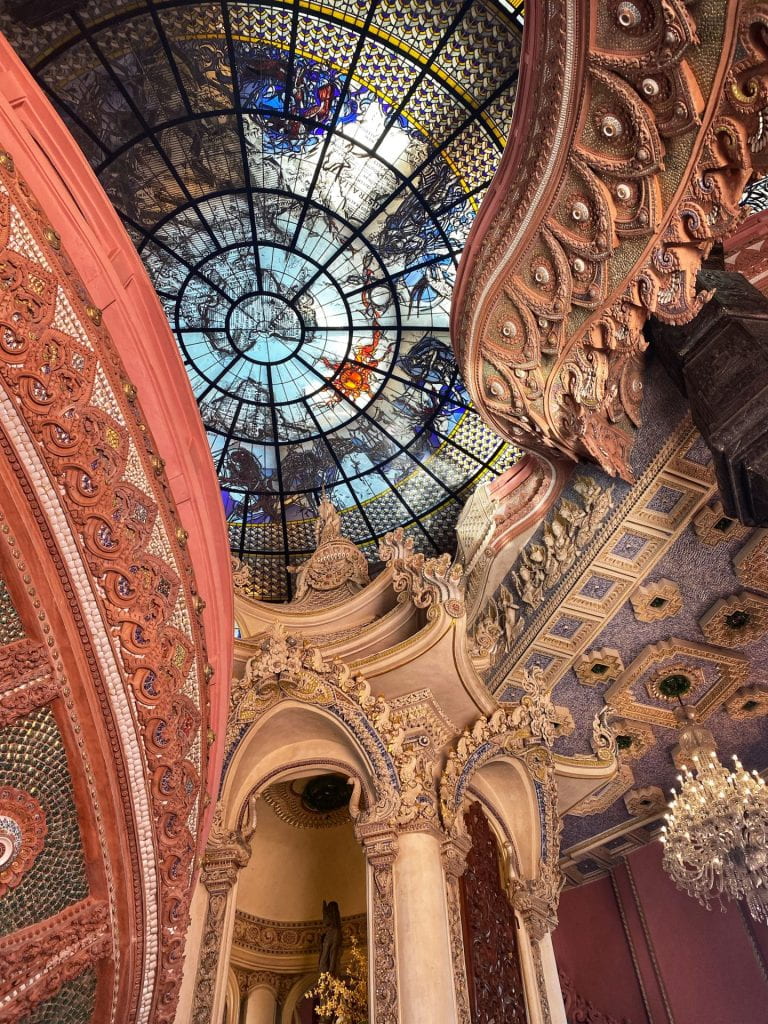
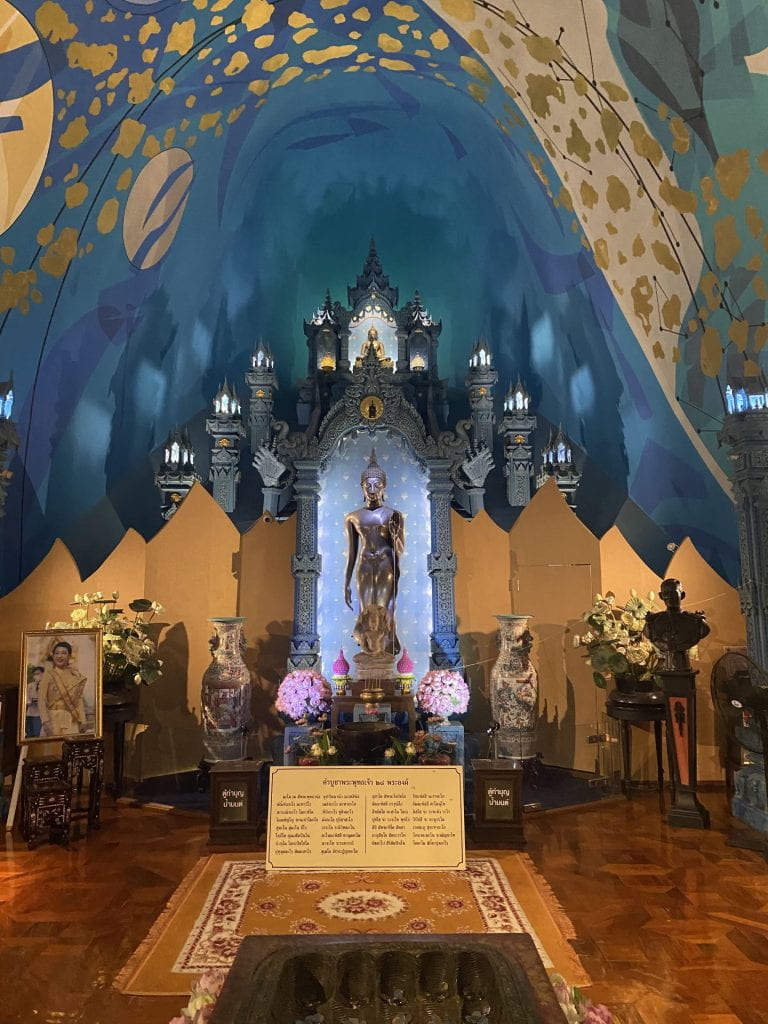
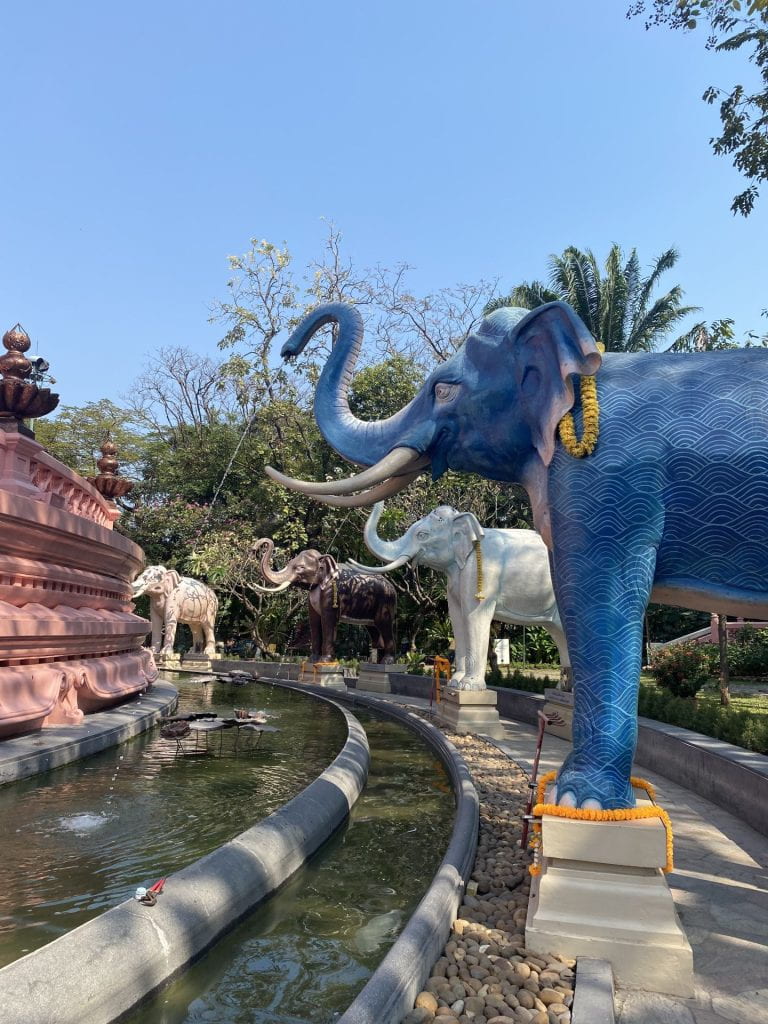
After a long, tiring, and exciting weekend, it was time to go back to our internships and start planning our next adventure around Thailand!
See you again soon! 🙂
